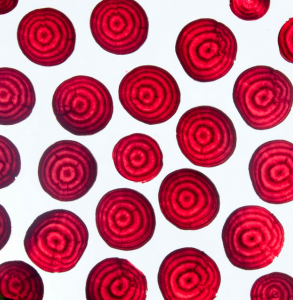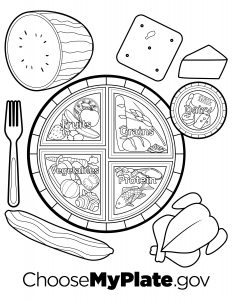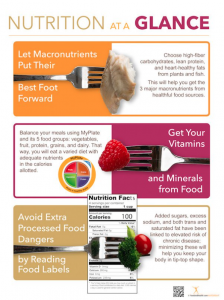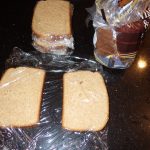 I bet everyone, at one-time-or-another, thrown a loaf of bread or an extra bag of hot dog buns directly into the freezer in the store wrapper. Then a few weeks later wondered what happened and why it was crumbly, dry, tasted like the inside of the freezer and was basically inedible.
I bet everyone, at one-time-or-another, thrown a loaf of bread or an extra bag of hot dog buns directly into the freezer in the store wrapper. Then a few weeks later wondered what happened and why it was crumbly, dry, tasted like the inside of the freezer and was basically inedible.
Easy answer: freezer burn.
This is the process of food drying out inside the freezer. This usually happens if the food has been improperly wrapped. Cold moving air inside the freezer is your enemy when it comes to the quality of the food once thawed. This air can get into inappropriate containers and wraps and causes the food to be dehydrated, develop off-flavors along with other quality and texture changes.
Bread is a perishable product. The main problem with bread is that it becomes stale and may develop mold. In general, commercial breads can be kept in a cool dry place (like the pantry, kitchen counter or bread drawer) for two to five days. Homemade breads and those commercially made without preservatives have a shorter shelf life.
You can put bread in the refrigerator to inhibit mold growth, but this tends to speed staling. 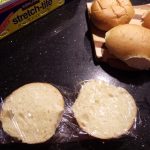

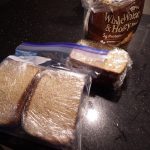
Freezing bread is generally the best alternative for storing bread for longer than a few days. Staling and mold growth will be slowed or halted in the freezer. The main thing to remember is that it should be wrapped well. Just putting it in there in the bag it came in from the store is asking for failure. Bread wrappers are not sufficiently moisture-vapor resistant to be used for freezing. Well wrapped bread keeps in the freezer for two to three months.
Bread should be removed from the store wrap and placed in what they call moisture and vapor proof packaging. This packaging will not become brittle or crack at low temperatures and keepd that damaging air out. This packaging will also protect foods from absorbing off-flavors or odors.
What is a good wrap? Specifically developed freezer paper is good. Heavy-duty aluminum foil also works well. Another good way to package bread is in zip-top freezer bags. These allow you to take out just what you need and keep the rest frozen.
A few kitchen hacks to keep bread fresher longer:
- I wrap my bread in two slice packs inside the freezer bag, just right for a sandwich or easy to separate if I only want one piece.
- I slice English muffins and bagels before freezing and separate the layers with plastic wrap. That way if I only want half a muffin I can easily take out just one half and keep the rest frozen.
- I do the same with bagels. Cut them in half and then in quarters and separate the pieces as I wrap. That way if I only want half a bagel I get both a top and bottom and not just the boring bottom half.
- When purchasing loaves of bread from a store it is always better to get the bakery to pre-slice them on a machine for you. Then you can wrap the slices into 2 serving packets or double bag them all if you are going to use them up fast.
Thawing a piece or two of frozen bread only takes a few minutes on the counter. Individual slices, bagels or English muffins can go straight into the toaster.
One last thing. What about if the bread does become moldy, should you just cut it off and use it anyway? NO. Bread is porous allowing molds to quickly and easily spread. It may be contaminated with toxins deeper than you can see. Moldy bread should be pitched.
Cheryle Jones Syracuse, MS
Professor Emeritus, The Ohio State University
Check out our new materials now at

Drink Water Tearpad 50 Pages English 8.5x11" Color Handouts for Nutrition Education
$42.00 $46.00
Add to Cart







